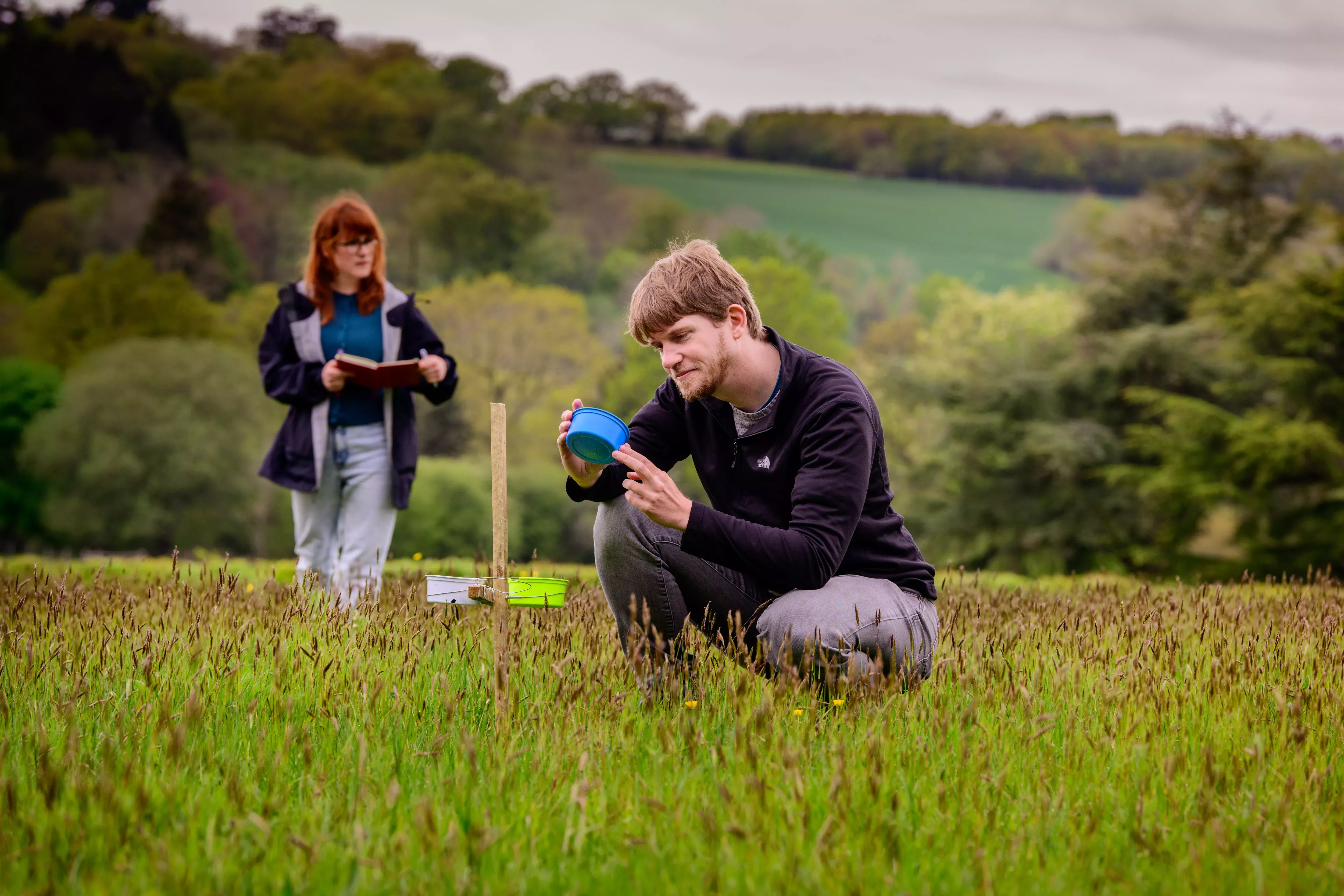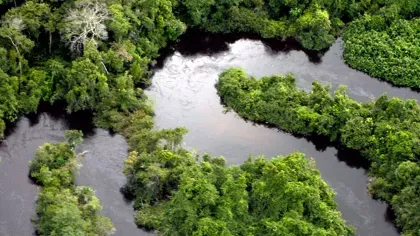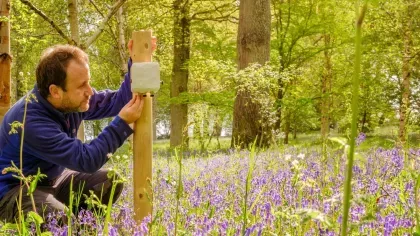29 May 2022
Spatial Analysis: Mapping out Wakehurst’s landscape
Learn about how we're investigating ecological health and carbon storage at Wakehurst from Spatial Analysis intern Thomas Robson.

How can we tackle climate change, biodiversity loss and food security from our back garden?
That’s the question Nature Unlocked asks; our cutting-edge research project transforming Kew’s wild botanic garden, Wakehurst, into a ‘living laboratory’.
Over the next three years, we will research, engage with, and share the value of UK biodiversity to inform nature-based solutions to critical global challenges like biodiversity loss and climate change.
Kew scientists will deliver expert research across four areas: carbon, pollination, hydrology and wellbeing; all underpinned by biodiversity.
To tackle the climate crisis, we not only need to reduce carbon emissions, but discover new ways to capture more carbon from the atmosphere.
Here’s some of the work we’ve been doing at Wakehurst exploring plants and fungi's role in carbon capture.
.jpg.webp?itok=2ymjwYK7)
Eyes in the sky
Our Spatial Analysis team are surveying the entire Wakehurst site to collect high resolution imagery.
The team use state-of-the-art drones that fly like small model aircraft to get the best bird’s eye view of our 500 acre site.
These drone images will be used to construct digital elevation models of the terrain and give insight into the health of Wakehurst’s trees.
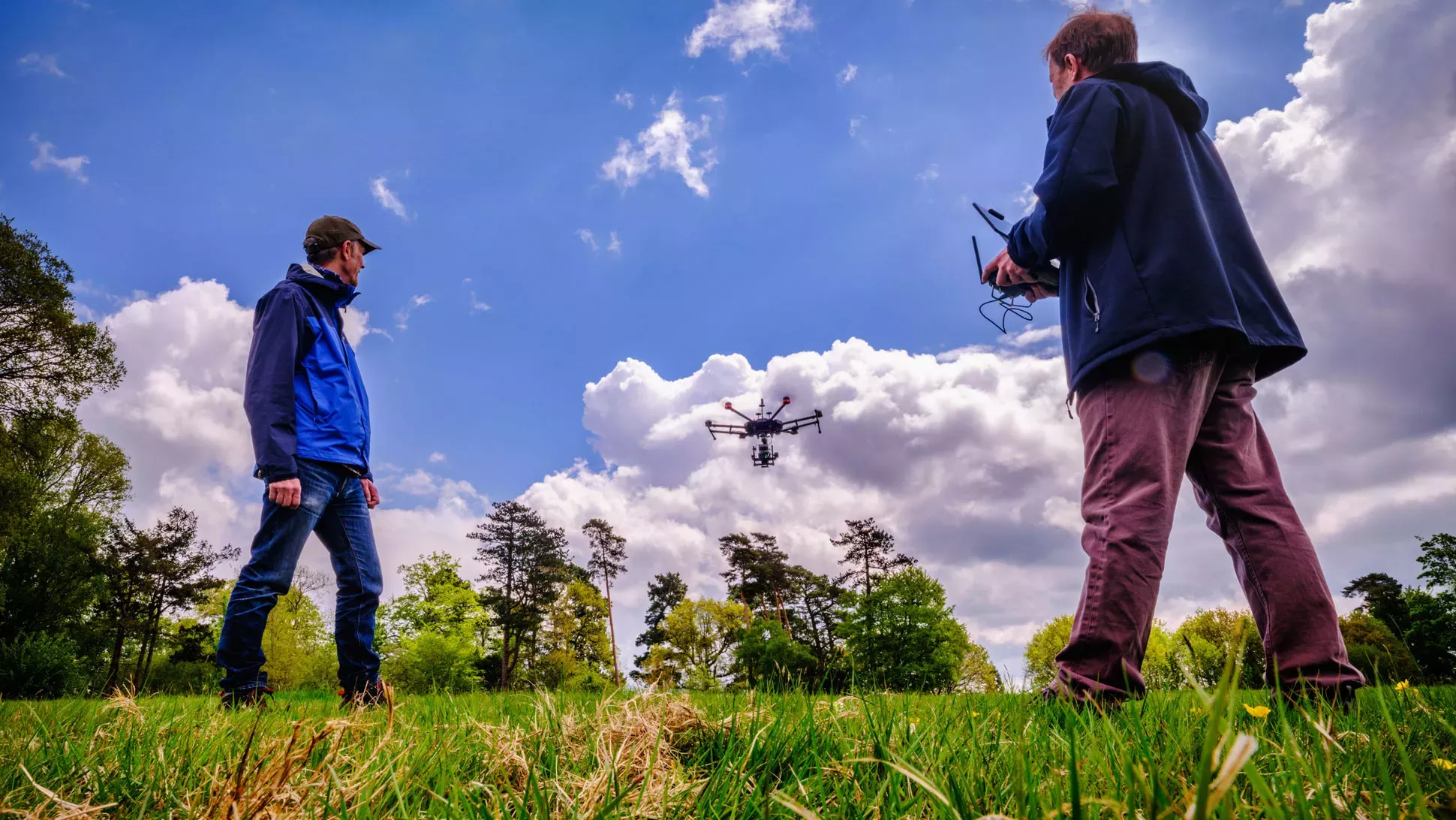
Digging for answers
To better understand Wakehurst’s soil, our Mycology team led by Laura Martinez-suz has collected soil from across the Wakehurst site.
Understanding soil is vital when researching carbon capture. Most land-based carbon is stored within the soil, and its fungal inhabitants are key players in the carbon cycle.
This study was a real group effort — none of it would have been possible without the help of Wakehurst’s Horticulturists, who volunteered two days of their time to help collect samples.
‘It was an amazing experience for Kew Science and Horticulture to collaborate and work together, combining experiences that will go towards improving land management for nature-based solutions,’ said Thomas.
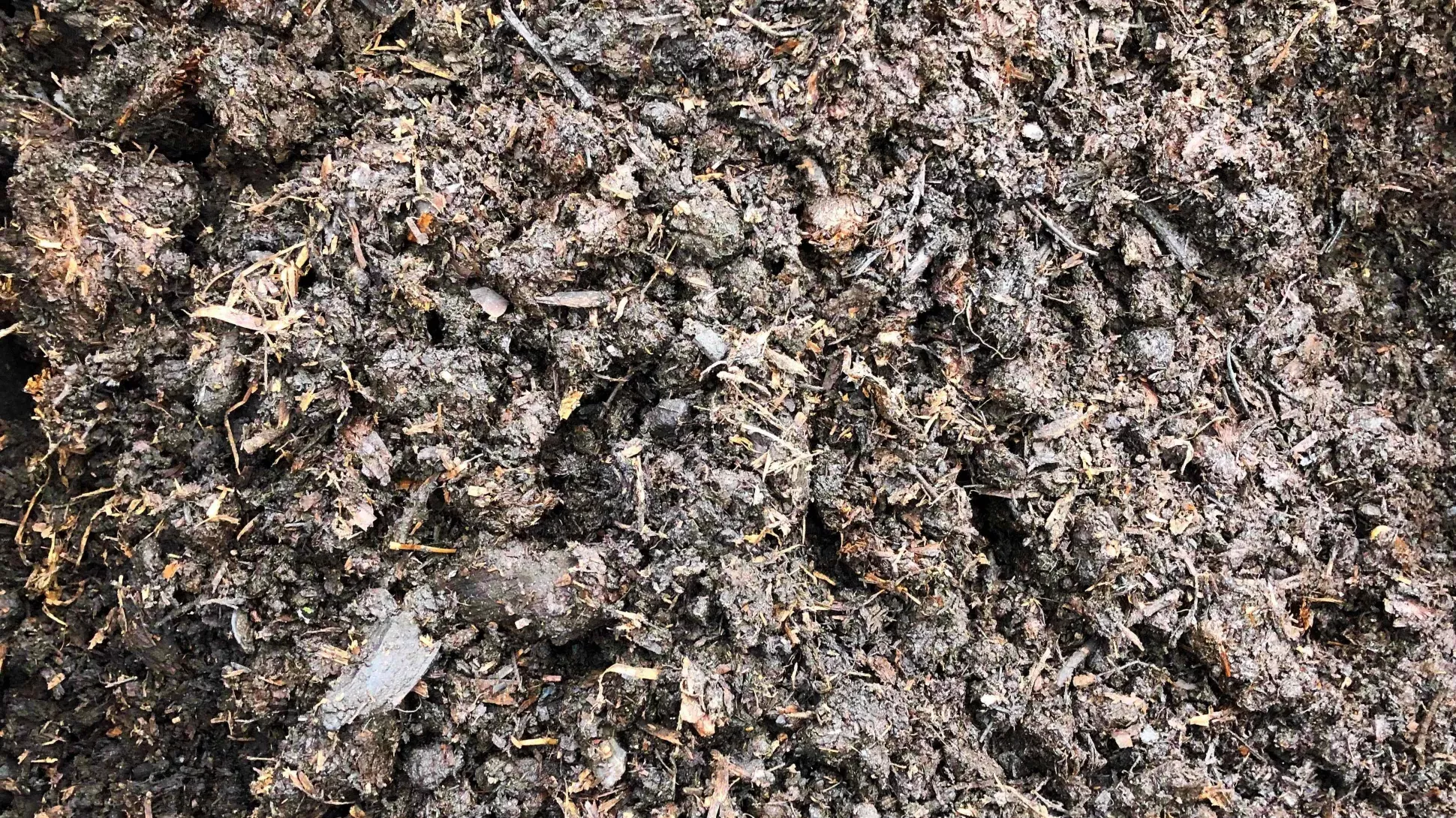
Laser focussed
To assess how much carbon is stored in our trees, we use Terrestrial LiDAR Scanning (TLS).
LiDAR works by firing a laser at an object, then measuring the time it took for the reflected light to return to the receiver. This way, we can generate a highly detailed 3D model of a tree called a point cloud.
Then, by using specialised software, we calculate the volume of the trunks and stems, which in turn allows us to measure how much carbon is stored in the entire tree.
Thomas said, ‘The use of TLS for ecological purposes is really intriguing, as it provides a non-detrimental method of accurately measuring the carbon content of woodland.’

Kew at COP26
In 2021, Kew attended COP26 in Glasgow. Kew scientists staffed our display in the UN Pavilion which communicated nature-based solutions to climate change, and showcased the incredible plants that could unlock a sustainable future for us all.
The conference was a critical moment for humanity to commit to changes to help mitigate the climate crisis we find ourselves facing, and the work of Nature Unlocked was a key feature of this display.
‘I was really impressed with Kew’s stand and to see how our science sits within the global challenges addressed in the conference,’ said Thomas ‘COP26 will definitely be one of the highlights of my internship!’

Our future
Our science and conservation work as part of Nature Unlocked will also support RBG Kew’s wider work, including our sustainability strategy.
We’re finding out how much carbon is stored in our gardens, and Kew scientists are developing new ways to understand the health of our ecosystems and measure their biodiversity.
By unleashing the power of nature today, we can secure the future of food, medicine and clean air — the future of all life on Earth.

